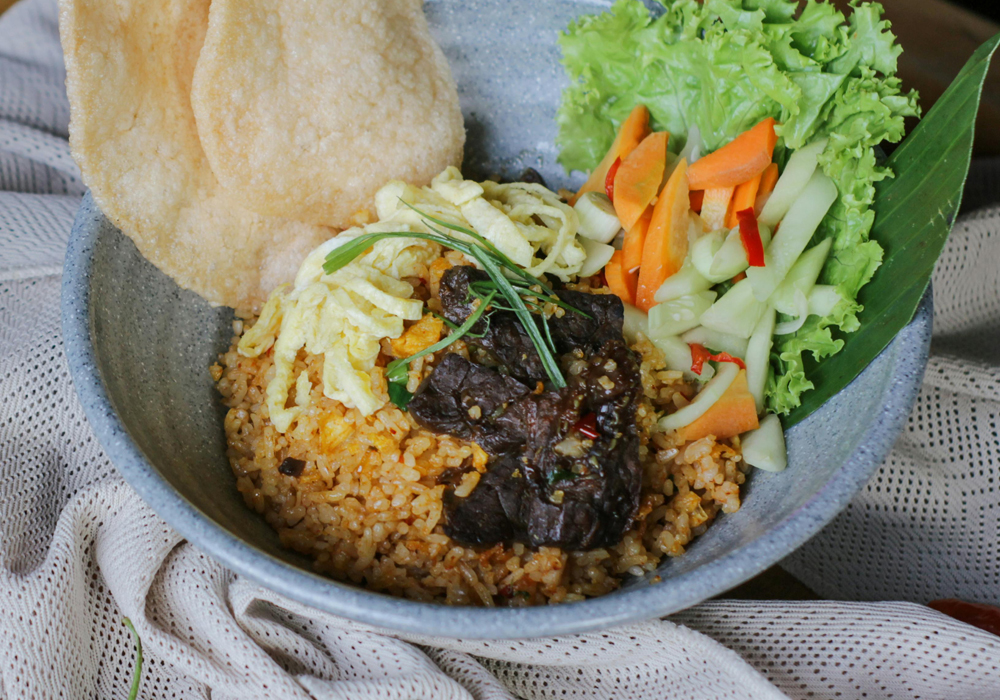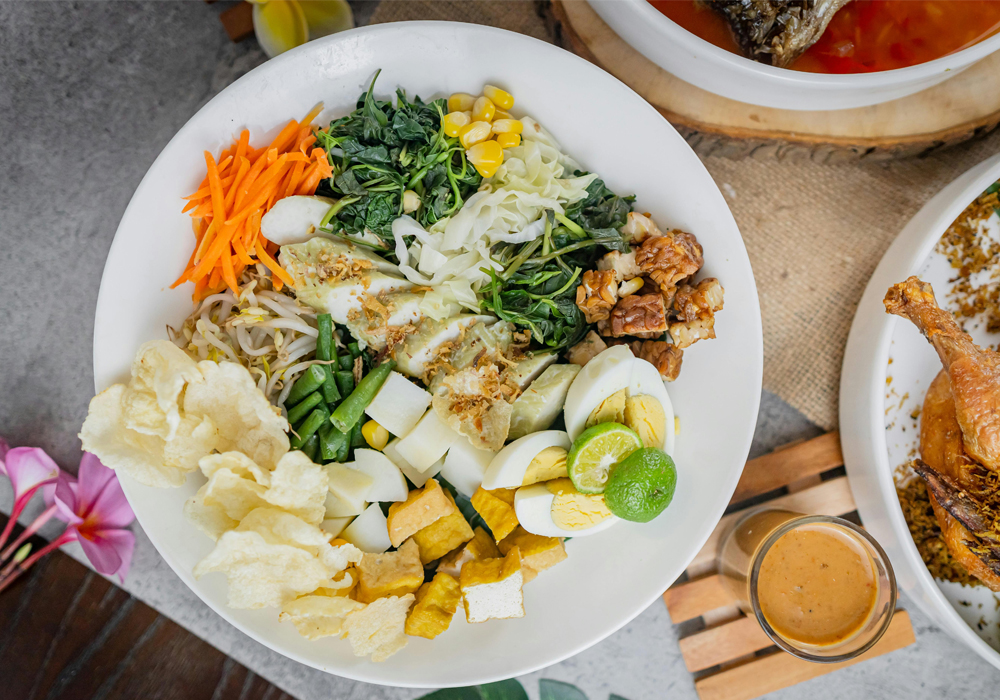Forget everything you know about food pyramids and orderly dining. Indonesian cuisine doesn’t just knock on your door, it kicks it down, demands to be fed, and then gives you a flavor combination you didn’t even know you were missing. This isn’t just eating; it’s a full-contact sport for your tastebuds, a ridiculously wonderful, spicy, and coconut-milk-drenched journey across an archipelago of over 17,000 islands.
Now, how many Indonesian cuisines are there? That’s like asking how many grains of sand are on Bali’s beaches! The short, official answer is that Indonesia is home to over 1,300 recognized ethnic groups, according to the 2010 census. And here’s the fun part: practically every single one of them has their own unique culinary traditions and signature dishes. You could spend a lifetime traveling from island to island, from the Javanese heartland to the Minangkabau highlands, the Batak lands of Sumatra, and the spicy shores of Manado, and never eat the same meal twice. It’s a spectacular, delicious mess held together by two things: rice and the omnipresent, fiery spirit of sambal (chili paste).
Imagine a country where the simple act of choosing a restaurant is a geopolitical decision.
The Great Java/Sumatra Culinary Smackdown: Sundanese vs. Padang vs. West Java
Let’s address the confusion right away: West Java is the geographical home of the Sundanese people and their cuisine. But then there’s Padang food, which hails from West Sumatra. They both share the “West” prefix but are about as similar as a gentle whisper and a rock concert.

Sundanese Cuisine (West Java’s Gentle Green Giant):
If Padang food is a fiery metal band, Sundanese cuisine is a peaceful, acoustic folksinger. Hailing from West Java (around Bandung and surrounding areas), this food is all about freshness, simplicity, and a light touch. The absolute hallmark is lalapan, a generous, vibrant platter of raw vegetables like cucumber, basil, cabbage, and eggplant, meant to be dipped liberally into sambal terasi (chili with fermented shrimp paste). It’s the original detox diet, except you’re also shoveling rice.
Key characteristics:
- Raw Power: The love for lalapan (raw veggies).
- Sweet-Sour Comfort: Dishes like Sayur Asem (tamarind vegetable soup) are tangy, complex, and refreshing.
- The Simplicity: Think light, fresh fish (Ikan Mas) that’s either fried or steamed (Pepes Ikan).
- The Vibe: It’s often served lesehan style—sitting on mats on the floor—a sign of its relaxed, down-to-earth nature. A famous Sundanese specialty is Karedok, a raw vegetable salad tossed in a pungent, spicy, peanut-kencur-based dressing.
Padang Cuisine (West Sumatra’s Spicy, Creamy, Global Ambassador):
Also known as Minangkabau cuisine, this is arguably the most famous and widespread Indonesian cuisine globally, thanks to the Minang people’s tradition of migration. When you see a Nasi Padang restaurant, it’s not a single dish; it’s a glorious, terrifying, and overwhelming culinary buffet where every dish you sample is served to you on little plates piled high in a spectacle called hidang.
Key characteristics:
- The Beef King: Rendang. This is the slow-cooked beef stew simmered in coconut milk and a ridiculously rich blend of spices until the liquid dries out and the spices perfectly caramelize onto the meat. It’s so good, it was once crowned the World’s Most Delicious Food. It’s intense, it’s oily, it’s perfect, and it’s the opposite of simple.
- Coconut Milk Obsession: Everything is drowned—in the best possible way—in santan (coconut milk). Gulai (rich, creamy curry) is a staple, from fish to vegetables.
- Fiery Reds: The heat is cranked up. Dishes like Ayam Pop (skinless boiled, then lightly fried chicken) or Telur Balado (egg in a vivid red chili paste) are mandatory, featuring the Padang signature of rich, oily spice.
- The Vibe: Everything is rich, heavy, and complex. It’s an explosion of flavor and a challenge to your digestive system, but you’ll happily accept the challenge.
In summary: Sundanese food is about fresh air and vibrant greens, gently kissed by spice. Padang food is a heavy metal album of creamy, caramelized, slow-cooked meats, screaming spice into the void. West Java’s cuisine is Sundanese, characterized by the preference for raw salads and lighter preparations, standing in contrast to the rich, multi-day cooking of West Sumatra (Padang).

The Foreigner’s Favorites: Gateway Dishes to a Spicy Paradise
When the rest of the world bravely steps into the Indonesian food scene, a few iconic dishes inevitably make them fall head-over-heels, even if they have to dab their forehead with a napkin and reach for an iced tea.
- Rendang: The aforementioned, world-conquering beef stew. It’s an easy sell: “It’s beef, slow-cooked until it’s unbelievably tender and packed with flavor.” The spice level is secondary to the sheer depth of taste.
- Nasi Goreng & Mie Goreng: Fried rice and fried noodles. These are the ultimate Indonesian comfort food and the dish every tourist tries first. It’s simple, customizable, savory, a little sweet (thanks to the indispensable sweet soy sauce, Kecap Manis), and universally understood. It is, quite literally, the national staple that everyone eats for breakfast, lunch, or dinner—often all three.
- Sate (Satay): Tiny skewers of marinated and grilled meat (chicken, beef, goat) served with a luscious, thick peanut sauce. The smoky char from the grill, the sweet and savory marinade, and the rich, nutty sauce make it instantly addictive and globally popular.
- Gado-Gado: The Indonesian “medley” salad. It’s a beautiful pile of blanched and raw vegetables, potato, tofu, tempeh, and boiled egg, all smothered in a rich, slightly sweet peanut sauce. For many vegetarians and salad lovers, it’s the perfect way to engage with the complexity of Indonesian flavors without the intensity of a heavy curry.
- Soto: The ubiquitous, comforting, aromatic soup. While there are a million regional varieties (Soto Ayam, Soto Betawi, Soto Padang), they all offer a warm, spiced broth served with rice, vegetables, and the protein of choice. It’s soul-food perfection, a delicious yellow hug in a bowl, often colored brightly with turmeric.
Indonesian cuisine isn’t just a collection of dishes; it’s a loud, vibrant, all-you-can-eat tour of a sprawling, diverse nation. It’s where the sweet meet the savory, the simple meets the complex, and every meal ends with a promise of “I’ll definitely need more rice.”
